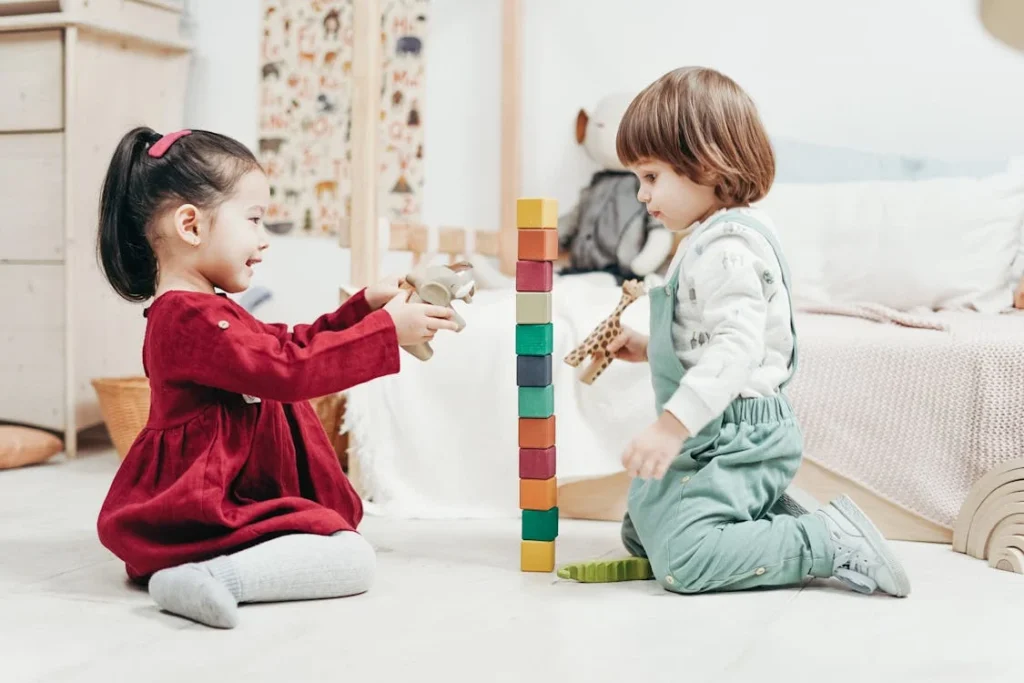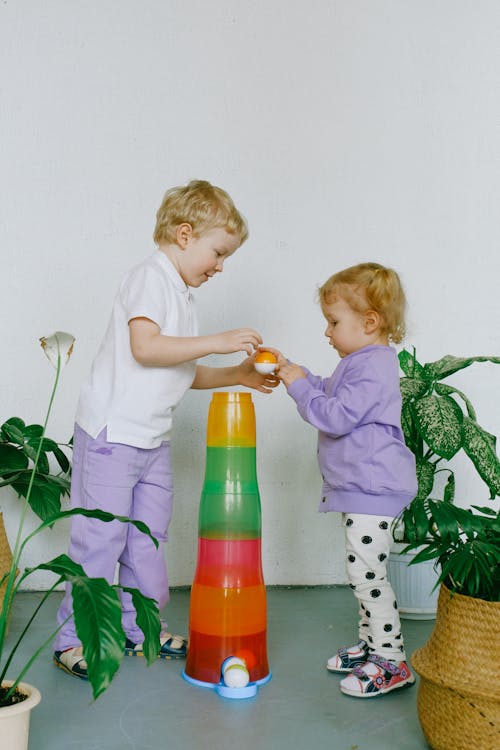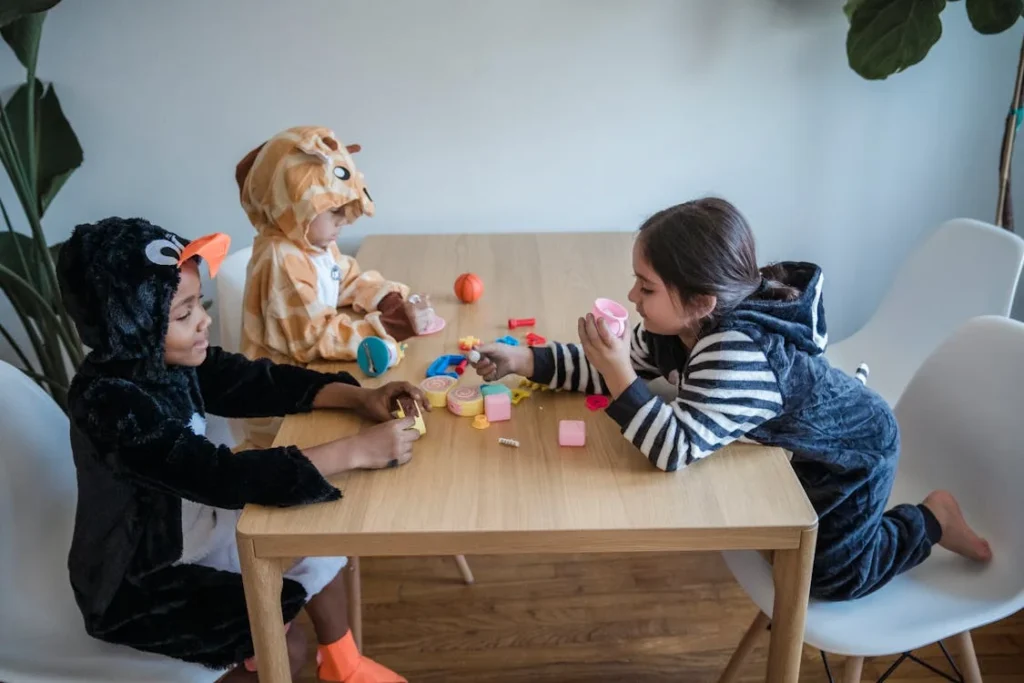Do you want to know how to teach my four year old to share? You have come to the right place! Most parents have experienced an uncomfortable circumstance in which their child refuses to share a toy with another child on the playground or during a playdate. We sit there and try to convince our child to give up the object they enjoy because another child is interested in it.
Why are we doing this? One of the foundations of early childhood education is educating children to play effectively together, which many parents interpret as teaching their children to share and play.
Table of Contents
Introduction to How to Teach my Four Year Old to Share

What is our purpose in educating our children to share? Should educating our children to share help them fit in? Do we want to raise our children to be kind people who satisfy the needs of others? Or is it because we want other adults to see that we adhere to societal conventions and not come across as selfish or irresponsible parents?
During the early formative years, children learn to meet their own needs. Sharing, lending, and borrowing are difficult for young children to understand. Toddlers lack empathy and cannot understand another child’s point of view. Forcing your child to share does not teach the social skills that we want toddlers to learn; instead, it may send numerous messages that we do not want to communicate, increasing the rate at which our toddlers throw tantrums.
Forget Forced Sharing

Imagine your son on the playground, playing with his toys. Another boy looks at his red, glossy Hot Wheels car. He follows your son about, demanding, asking, and pleading for the chance to play with it.
Many parents who witness the incident might respond, “It’s time to share the car. You’ve had the opportunity to play with it, but that small guy would also like to play with it for a few minutes.”
Sharing is about giving. It’s about being kind. The problem is that it is often accompanied by the expectation that children must oblige someone at any given time.
Your son was quietly playing, possibly lost in a fantasy world or minding his own business, when he was abruptly forced to stop because someone else wanted the same toy. Why?
According to Shumaker, this child does not learn to be generous. He only “learns that sharing feels bad.”
“In reality,” Shumaker says, “the parents are sharing, not the kids.”
Even more ironic, grownups don’t have to do this.
Shumaker provides an excellent example: “Imagine yourself engaged on your smartphone. Suddenly, someone demands that you hand it up, possibly even taking it from you. “I need to text a friend,” he says.
Yes, it may be an emergency. But wouldn’t your initial reaction be wrath, distrust, and a lack of want to help?
Forced sharing creates resentment, makes sharing annoying, and does not teach generosity; rather, it stifles it.
Shumaker summarizes, “We’d gladly lend our phone to a friend or stranger, but we want them to wait until we finish. The same should apply to children.”
Even Long Turns Are Okay
Here’s the cold, hard truth: if your child chooses the length of his turn, it may be a few seconds or several hours.
You may be concerned that no one else will have their turn. Wouldn’t that be impolite?
Not! Long bends are very reasonable. Continued, focused play allows children to hone their interests, practice abilities, and improve concentration. It indicates a long attention span, as opposed to pushing them to ponder, “Okay, what’s next?” every few minutes.
Children also take longer turns when they anticipate forced sharing. They keep onto toys merely to maintain control.
Don’t Send the Wrong Message
According to clinical psychologist Laura Markham, Ph., rather than training children to speak up for themselves, forced sharing teaches some incorrect messages. Such as:
- Crying loudly might help a child get what they want.
- Parents choose who gets what and when.
- Children should always stop what they are doing to give something to another youngster simply because they ask.
These are not the lessons we want to pass on to our children, yet when compelled to share and play, they typically hear this.
Don’t Worry About Placating an Impatient Child

Children can create a great scene. Toddlers have tantrums over the simplest of toys. Entitled children want what they want right when they want it.
It’s terrifying and can transform even the brightest, grassiest playground into a made-for-TV drama.
But do not give in. An impatient child has to be taught to wait.
Shumaker notes, “Learning to control behavior and communicate emotional feelings appropriately is one of the primary functions of early life. Impulse control (waiting for a toy rather than seizing it) is essential for brain development and improves with practice.
Turn-taking creates these opportunities.
Most kids already have too many toys. Today’s people, more than earlier generations, expect rapid gratification. If anything, kids need more practice waiting patiently.
Making them wait is worth the drama and frustration. The more opportunities they have to rehearse, the simpler the wait will be.
The goal is to avoid forced sharing and to do so politely and non-confrontationally. This is because it is frequently a concept that other parents, children, and instructors need to familiarize themselves with.
Provide Your Child With Tools
Dr. Markham suggests that instead of pressuring your children to share and play, you should provide them with dispute-resolution tools. The idea is for our child to recognize when another child wants a turn with anything they are playing with and guarantee that the child receives a turn.
When another child has an object that our child wants, we hope they can control their urges and not simply grab the item. Therefore, we should demonstrate patience. We hope they will use their words to resolve the matter with the other child, allowing them to play with the item in the future. We should offer them with suitable words.
Teach Kids to Advocate for Themselves
We teach children critical life skills by teaching them to use their words, advocate for themselves, and resolve conflicts with other children. Children do not need to be notified when their time is up, and they are not required to share and play with others instantly.
If parents constantly intervene or impose boundaries, children lose the opportunity to learn from their experiences. Children must learn to speak up for themselves nicely and respectfully.
Encourage Self-Regulation

Children should be able to play freely, feel happy about their experience, and give up the item when they are done. This strategy promotes self-regulation, discipline, and recognizing when one is fulfilled. It also encourages charity. Children enjoy making other children happy, and when they can do so on their own time rather than being forced, they learn to be kind and generous.


